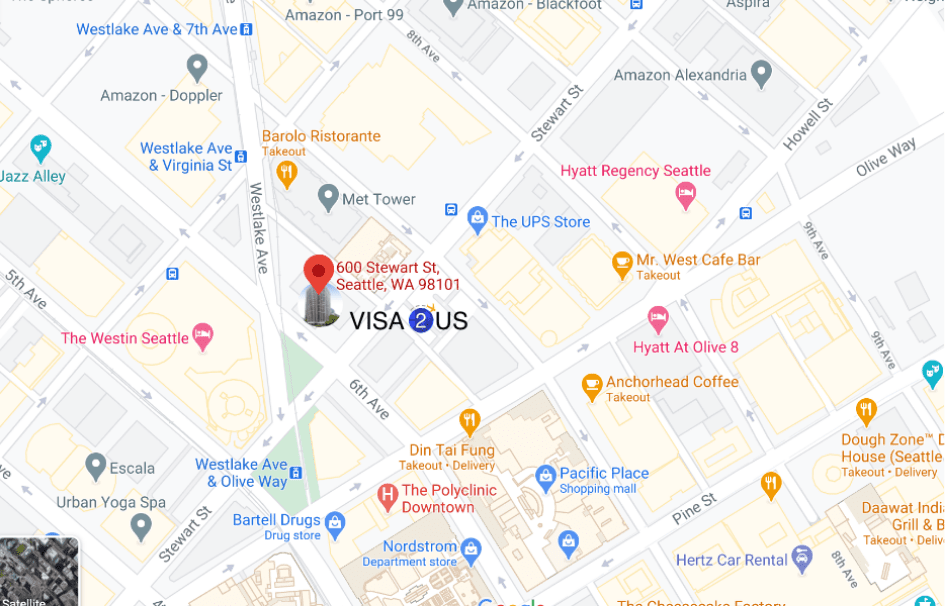Simply answer a few questions and start your application now.
Get Started chevron_rightVISA2US Blog
Our blog is a source of latest immigration news, policy updates and trends for thousands of readers every month.


Even the H-2 Visas Are Getting Modernized: What Does This Mean for Skilled and Unskilled Workers?
October 4, 2023
As the immigration system in the United States continues to undergo scrutiny, it is slowly evolving one category at a time. Most recently, on September 18, 2023, the Department of Homeland Security issued a proposed rule to bring the H-2 Temporary Visa Program up-to-date, strengthening protections for these workers and making other much-needed changes. What does this modernization attempt mean for skilled and unskilled workers? We’ll break down the changes here.

Traveling and Re-Entering the US on an H-1B Visa
September 12, 2023
Obtaining an H-1B visa is essential when living and working in the United States as a foreign national. This coveted document is the evidence you must present to US Customs and Border Protection before stepping foot in America. But what happens when you must leave the country for a while and return? Here is the information you need to know to travel and re-enter the US on an H-1B visa.

Eligibility for the H-1B Cap Gap Extension
September 11, 2023
When you’re trying to obtain an H-1B visa, you must abide by specific beginning and ending dates, and these aren’t always optimal. This can be particularly concerning when you’re a student finishing your university program with a gap between your last day of school and your first day at your new job. Since this is relatively common, the United States Citizenship and Immigration Services (USCIS) has a process in place to streamline your H-1B petition and allow you to remain in the US with a cap gap extension.

Using Compelling Circumstances to Get Your H-4 Dependents an EAD
August 8, 2023
There are many benefits to an H-1B visa, making it a highly sought-after document for foreign workers worldwide. One of these perks is the ability to bring your spouse and dependent children with you to the United States under an H-4 visa category. However, that label doesn’t give those individuals the immediate right to work, as you have. Instead, they must apply for an Employment Authorization Document (EAD), and there’s no guarantee that this application will be approved. You may need to use compelling circumstance arguments to get your H-4 dependents an EAD, and we’ll explain what those are in this short blog.

How You Can Learn From the Laid-Off H-1B Visa Holders Who Found New Jobs
July 6, 2023
If you’ve paid attention to the immigration scene in the United States recently, you’ve heard about the mass layoffs in the tech industry over the past year. As mega-corporations dealt with the long-term fallout of the pandemic, a somewhat unexpected result was the need to reduce jobs significantly, to the tune of tens of thousands of H-1B visa beneficiaries. These visa holders faced the serious threat of losing their status if they didn’t find a new job before the end of their grace period. Against the odds, 90% of visa holders were able to successfully navigate this challenge. How did they make this happen, and what can you learn from it as an H-1B visa employer or employee? Read on to find out.

How Does the Cap Gap Extension Apply to H-1B Visas?
June 8, 2023
Foreign nationals on an F-1 student visa often prefer to stay in the United States and continue their careers. The H-1B work visa is one way to do this. However, most job offers are obtained through businesses under the “capped” category. In these situations, a limited number of visas are allotted annually, and those approved can’t enter the US to begin work until October 1 of that fiscal year. So what happens to those in F-1 status who are approved for an H-1B visa but their OPT authorization or F-1 grace period expires before October 1? That’s where the H-1B Cap Gap Extension kicks in, and we’ll explain the details here.

How Laid-Off Tech H-1B Holders Are Staying in the US Legally
May 2, 2023
If you’ve paid attention to the immigration climate in the United States, you’ve heard about the massive layoffs in the tech sector. Many of these workers were H-1B visa holders who rely on steady employment to keep their legal status in the country. Per the H-1B visa’s terms, workers have 60 days to find another employer willing to sponsor their visa status, or they must return to their home country. But with so many people searching for work within similar industries, this is a challenging endeavor. However, a recent workaround may keep thousands of these laid-off tech workers in the US legally while they look for employment, even after their 60-day grace period ends by changing from an H-1B to a B-1 or B-2 visa.

Tech Layoffs Affecting Your H-1B Status? You're Not Alone, But There's Help
March 17, 2023
The H-1B visa is for foreign workers in specialty occupations, and the technology field clearly meets this definition. It’s not surprising that an overwhelming majority of these visas are given to those employed in the tech industry. Yet, this leaves the industry — and thousands of workers — prone to serious problems when the market causes substantial layoffs. That’s what is happening now, and if you’re one of the visa holders facing job loss, you’re not alone. The good news is that USCIS recognizes this is a mass issue, and they’re offering you hope.

How Hard is it To Transfer an Employer Under an H-1B?
January 26, 2023
When an H-1B petitioner files their application and is approved, they’re agreeing to work with a specific sponsoring employer in the United States. This is a significant part of the terms of the H-1B visa contract, and transferring to another employer once in the country isn’t as easy as “getting a new job.” The new employer must complete the visa transfer application, and USCIS must approve the job change for the H-1B holder to continue working in the country legally. How difficult is this to complete? This overview will help you understand what it takes to transfer employers under an H-1B visa.

The Employer's Role When the H-1B Employee is Terminated
January 17, 2023
While the H-1B beneficiary is the nonimmigrant employee performing the work of a specialty occupation, the employer plays a starring role in the process, too. Employers must initiate the H-1B petition, promise to fulfill certain duties and obligations, and continue to follow through with the government requirements as long as the employee is in their hire. But what happens when the H-1B visa beneficiary is terminated? This article explains what role employers must take in these situations.
Check Your Visa Eligibility

Contact Us
Email
Phone
888-666-3960Customer Service Phone Office Hours:
Monday ~ Friday
6:00 AM to 6:00 PM Pacific Time Zone
Address
600 Stewart Street Suite 400, Seattle, Washington 98101, USA (Plaza 600 Building)








